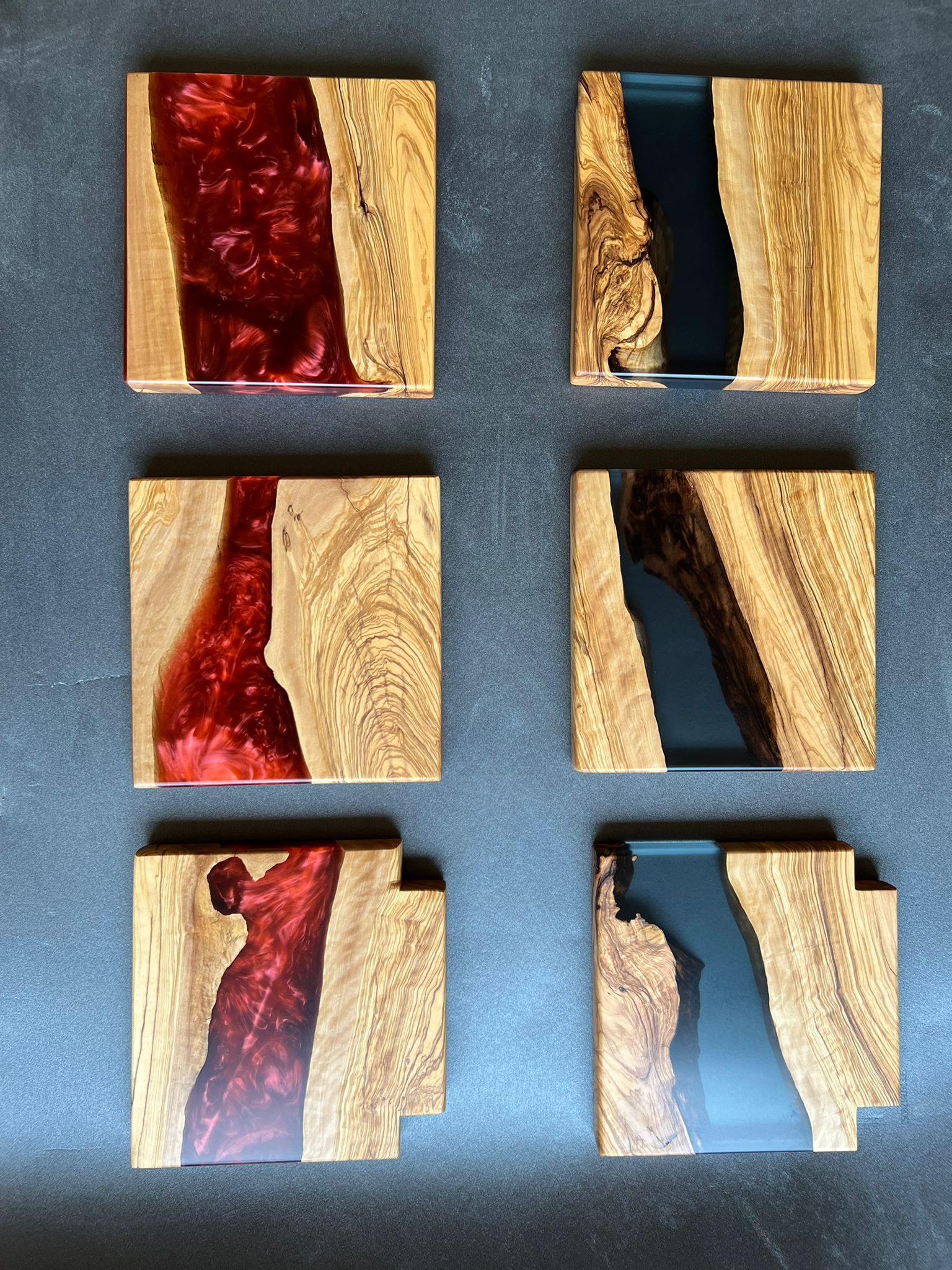What Are The Different Wood Types For An Epoxy Table?
The trend of epoxy tables is rising, and we see many DIY videos available on Instagram, TikTok, Facebook, and YouTube. Epoxy tables are made up of epoxy resin that is present between two or more wooden planks.
The epoxy tables give a natural and beautiful look. The resin epoxy sitting between the two wooden planks looks as if it is a flowing or steady river. But there are many other design inspirations.
Furthermore, these tables are popular because of their remarkable appearance, modern look, and durability.
The combination of epoxy and wood is what makes the table stand out. The epoxy tables can be made from different types of wood.
Different Kinds of Epoxy Table Wood
There are 73,000 different varieties of wood on the earth, making it tough to decide which one to use for your epoxy table. Elm, Oak, and Walnut are common wood kinds for this application, but there are other elements to consider before making your ultimate wood choice.
Many furniture customers who choose classic wood pieces or trendy resin wood tops may be perplexed by the types of epoxy table wood. Following are the types of wood to consider:
Timber
When choosing epoxy table wood, choose a flat piece of hardwood. Popular woods include elm, oak, redwood, walnut, and yew. These woods are quite hard, yet they may be sanded down to reveal an appealing pattern for the table.
The wood must have a moisture level of less than 20% for the resin to effectively adhere and make a solid table. With this in mind, search for wood that is firm, flat, and dried. Choosing the ideal wood for your epoxy table requires more than just examining the type of wood.
Black Walnut
Black walnut is a durable and resistant wood that is used to manufacture some of the most opulent epoxy river tables. Its deeper shade will blend nicely with any décor and is ideal for darker epoxy resin pours.
It gives a deep, rich hardwood material that will last for generations. Due to its scarcity, it is one of the most costly timbers for your epoxy table.
Cherry
Cherry wood is derived from the fruit tree American Black Cherry. It starts off pale pink and gradually darkens and gets scarlet. It may also contain black flecking.
When choosing this wood for your epoxy resin cherry river table, look for matching pieces because cherry is prone to staining.
Ebony
Ebony is a thick hardwood that is one of the few naturally black kinds of wood. Because of its density, ebony is impermeable, virtually indestructible, and rot-resistant.
With all of these qualities, ebony wood will certainly form a beautiful and costly wood table to clear coat with epoxy resin or a river table.
Mahogany
This is a quality exotic wood with a reddish tone that deepens and darkens over time. Environmental change has no effect on this sort of wood. Thus it will not shrink or distort.
Maple
There are two types of maple: soft and hard. The sugar maple tree produces hard maple, whereas the red maple tree produces soft maple.
Red maple is popular among woodworkers because it is gentler on equipment. At the same time, sugar maple is the most common live edge epoxy table due to its smooth sides.
Wood For Live Edge Tables
They make a rustic and appealing table surface out of slapped wood. Epoxy tables are frequently made from live-edge tables, but epoxy is used to fill in the gaps.
You should choose a sturdy and durable wood for a live edge table. Cherry, oak, redwood, and walnut are popular materials for live edge tables. These woods are well-known for their durability and hardness.
Live edge tables are made from the same materials as epoxy tables. This is due to the fact that certain types of wood are better known for their dependability, durability, and strength.
Another key factor to consider when deciding on the type of wood to choose for your live edge table project is the grain pattern.

Tool For Making An Epoxy Table
The primary tools needed to make an epoxy table are a chisel, sander, saw, and epoxy resin. Furthermore, you may need more tools. However, it depends on your requirements.
Chisel
This is the ideal tool for removing the bark from the wood’s edge. Other than that, the shave tools are undoubtedly superior because they are quicker, smoother, and less prone to making mistakes while in use.
Sander
To achieve the greatest results, use a powered sander. It does not matter what model you have. It just needs to work. You can also use the sander for sanding down all of the edges to get the desired effect.
Saw
You could use a saw, but most people prefer a table or circular saw. A circular saw is more portable and less expensive than a table saw. However, it depends on the length of your table. A table saw will offer a more precise cut.
Epoxy Resin
Casting resin is smooth enough to uniformly fill in all regions for better results. However, because resins are transparent, a color pigment will be required to get the river-like effect for the table. Once the resin is put into the mold, the rest pretty much takes care of itself. Allow enough time for the resin and epoxy to cure properly.
Conclusion
Epoxy tables are more than just a passing DIY craze. They are also magnificent pieces of interior furniture and eye-catching artwork.
If you are looking for the best wood for epoxy tables, then you can opt for elm, oak, or walnut. Note that the moisture level needs to be less than 20%.
It might take up to a year to fully air-dry wood. However, doing so decreases the chance of movement and offers a more sturdy and trustworthy material to utilize on your table project.
The epoxy resin adheres very well to wood and practically all other materials. A thick and syrupy resin will provide a sufficient surface layer. In comparison, a thinner glue will percolate through the natural pores of the wood and improve the adhering process.

Allen Chen
Passionate about woodwork, I started Epoxyism to display my latest creations and make them available to people seeking out unique tables and epoxy products.
